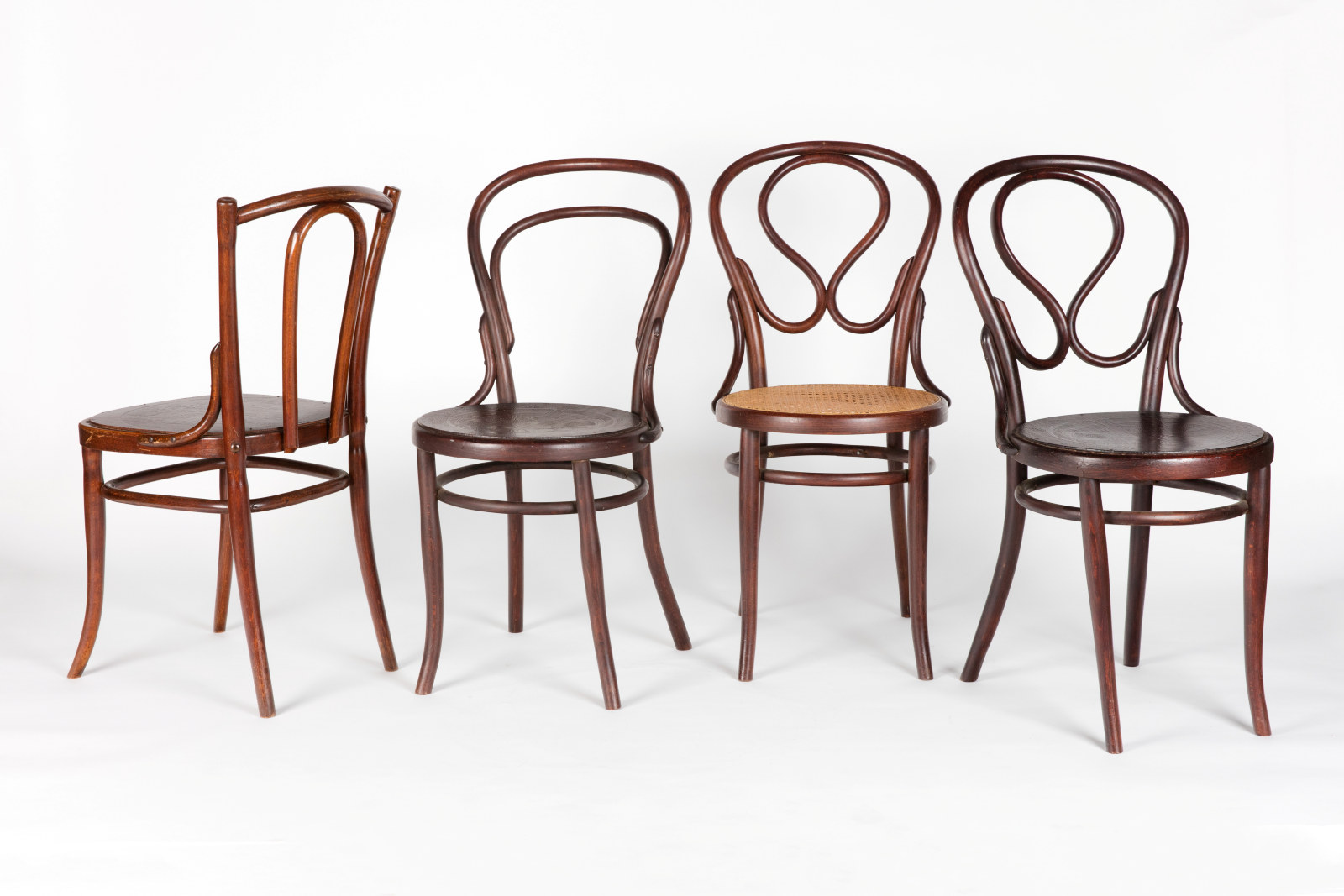Bentwood chairs and Sydney's Central Police Station

Bentwood chairs were a 19th-century furniture success story: made of steam-bent parts, they were mass-produced, durable, lightweight, versatile, and popular throughout the world.
They were invented by Austrian cabinet maker Michael Thonet following a series of attempts at bending wood in the 1830s and 40s. By 1853, the company ‘Gebruder Thonet’ [Thonet Brothers] was established, named after Michael’s five sons. The manufacturing process involved taking beechwood logs, which were cut and planed into long thin rods; the rods were steamed or soaked in hot water, bent into iron moulds, then allowed to dry; bent pieces were sanded and finished, then assembled.
Numerous designs were soon being manufactured and huge bentwood sales led to a number of other companies entering the market, first in Central Europe then later in North America. The success of the bentwood business model relied on low cost production at high volume. Low cost was achieved to some extent by designs that used minimal parts which were often interchangeable between chairs.
In Australia, bentwood furniture was usually retailed as ‘Viennese’ or ‘Austrian’ furniture. It was typically packed and imported as parts and only assembled on arrival: a kind of ‘knock down’ or flat pack furniture that predated IKEA by many decades.
In Australia, bentwood chairs were widely used in government and commercial buildings, offices and homes, courts and police stations. Bentwood chairs appear in many mugshot photographs from the 1920s ‘Specials’ collection in the NSW Police Forensic Photography Archive. The photos, which are notable for the surprisingly informal poses of the suspects, were mostly taken at Sydney’s Central Police Station and the chairs were part of the police station’s office furniture. A number of surviving chairs and the photo archive are held by the Justice and Police Museum.
By the 1920s, there was rationalisation in the bentwood industry in Central Europe as several of the largest companies like Thonet, J & J Kohn, and Mundus amalgamated. By 1938 Thonet had moved operations to the USA and the company continues to produce bentwood chairs to this day.
Further reading
- Ekaterini Kyriazidou and Martin Pesendorfer, ‘Viennese chairs: a case study for modern industrialisation’, The Journal of Economic History, vol 59, no 1, March 1999, pp.143-166.
- Derek E Ostergard, ed., Bent wood and metal furniture: 1850-1946, The University of Washington press, New York, 1987.
- Christopher Wilk, Thonet Bentwood & other furniture: the 1904 illustrated catalogue, Dover, New York, 1980.
- Virginia Wright, A quintessential global product: Bentwood furniture in Canada and Australia 1860 to 1945 [thesis], University of Technology Sydney, 2017.